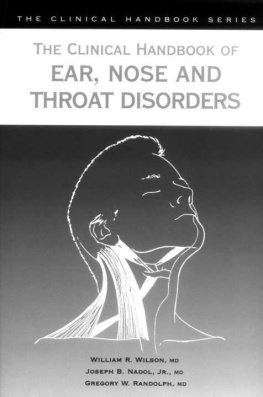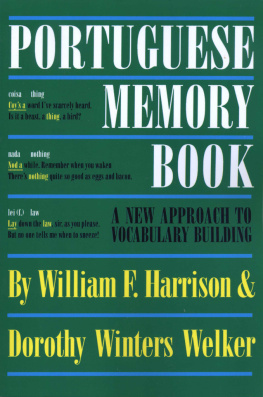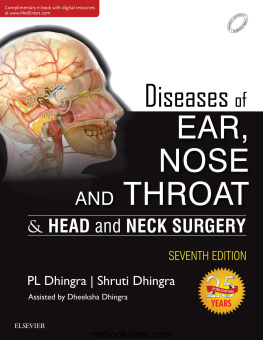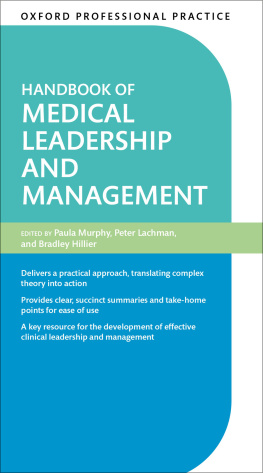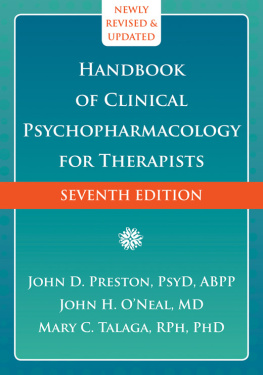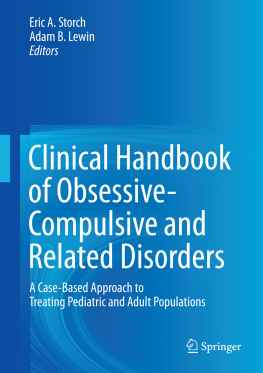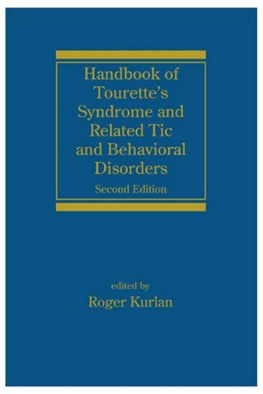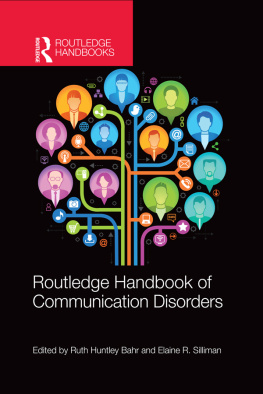WILLIAM R. WILSON, MD
JOSEPH B. NADOL, JR., MD
GREGORY W. RANDOLPH, MD
WITH MEDICAL ILLUSTRATIONS BY ROBERT J. GALLA




Contents
vii
ix
X
The ear and temporal bone
1 1
Joseph B. Nadol, Jr
Joseph B. Nadol, Jr
Joseph B. Nadol, Jr
William R. Wilson
Joseph B. Nadol, Jr
Joseph B. Nadol, Jr
Joseph B. Nadol, Jr
The nose and paranasal sinuses
William R. Wilson
William R. Wilson
William R. Wilson
The head and neck
Gregory W. Randolph
Gregory W Randolph
Gregory W. Randolph
Gregory W. Randolph
Gregory W. Randolph
Gregory W. Randolph
Gregory W. Randolph
Alfred L. Weber
Preface
This handbook is dedicated to all students of clinical otolaryngology, both young and mature. It and its predecessor, Quick Reference to Ear, Nose, and Throat Disorders (Philadelphia: J.B. Lippincott Co., 1983) evolved from a syllabus developed for a course for primary care physicians by the Department of Otology and Laryngology of the Harvard Medical School at the Massachusetts Eye and Ear Infirmary.
Although there are certainly many excellent texts of otolaryngology, this clinical handbook was specifically intended for primary care physicians, emergency room physicians and their trainees, and medical students. The symptom-oriented text provides practical algorithms for diagnosis and management. The appendixes describe pharmaceuticals commonly used in otolaryngologic practices and instruments that are necessary for a complete otolaryngologic examination. It is hoped that this text will serve, as its title implies, as a handbook and quick reference for busy clinicians and medical students, and that it will benefit their patients.
William R. Wilson, MD
Joseph B. Nadol, Jr., MD
Gregory W. Randolph, MD
List of contributors




Acknowledgements
We wish to thank our medical and surgical colleagues, residents in otolaryngology, and medical students, whose comments and questions have inspired and helped to focus the subject matter of this book.
We also wish to thank Carol Ota and Bob Galla, whose attention to details of the manuscript and illustrations have been most helpful, for their tireless efforts to provide a text that we hope will be useful to our readers.
1
Functional anatomy, physiology and
examination of the ear
Joseph B. Nadol, Jr
Functional anatomy and physiology
Auricle and external auditory canal
Tympanic membrane
Middle ear and mastoid cell system
Ossicles
Inner ear and internal auditory canal
Facial nerve
Examination of the ear
Inspection and cleaning
Otoscopy
Tests of auditory function
Tuning fork and whisper tests
Behavioral audiometry (standard hearing tests)
Special behavioral tests
Summary of special behavioral audiometry tests
Auditory evoked response testing
Otoacoustic emissions
Tympanometry
Tests for functional hearing loss
Vestibular testing
Caloric tests
Positional testing
Aschan classification of positional nystagmus
Fistula test
Facial nerve tests
Site-of-lesion testing
Neurophysiologic tests of neuronal viability
Other office otologic testing
FUNCTIONAL ANATOMY AND PHYSIOLOGY
The ear is divided anatomically into external, middle and inner ear segments (Figures 1.1 and 1.2). The external ear consists of the auricle and the external auditory canal. The middle ear consists of the ossicular chain and air space continuous with the mastoid air-cell system; it is separated from the external ear by the tympanic membrane. The inner ear consists of the bony otic capsule, auditory and vestibular receptor organs and the internal auditory canal containing the seventh and eighth cranial nerves.
Auricle and external auditory canal
The auricle, with the exception of the lobule, contains a cartilaginous skeleton that develops from cartilaginous accumulations, or `hillocks', derived from the first (mandibular) and second (hyoid) branchial arches. Therefore, congenital malformations of these arches are commonly associated with auricular abnormalities. Disordered embryologic development of the first branchial groove may result in dysplasia (stenosis) or atresia of the external auditory canal. The intrinsic musculature of the auricle allows rotation of the external ear in animals, but this function is vestigial in the human.
The lateral one-third of the external auditory canal is composed of cartilage extending from the auricle and is covered by skin with appendages specialized for cerumen production. The medial two-thirds of the external canal has a bony skeleton derived from the tympanic, mastoid and squamous portions of the temporal bone. The skin here is thin, devoid of appendages and easily abraded by instrumentation of the canal.

